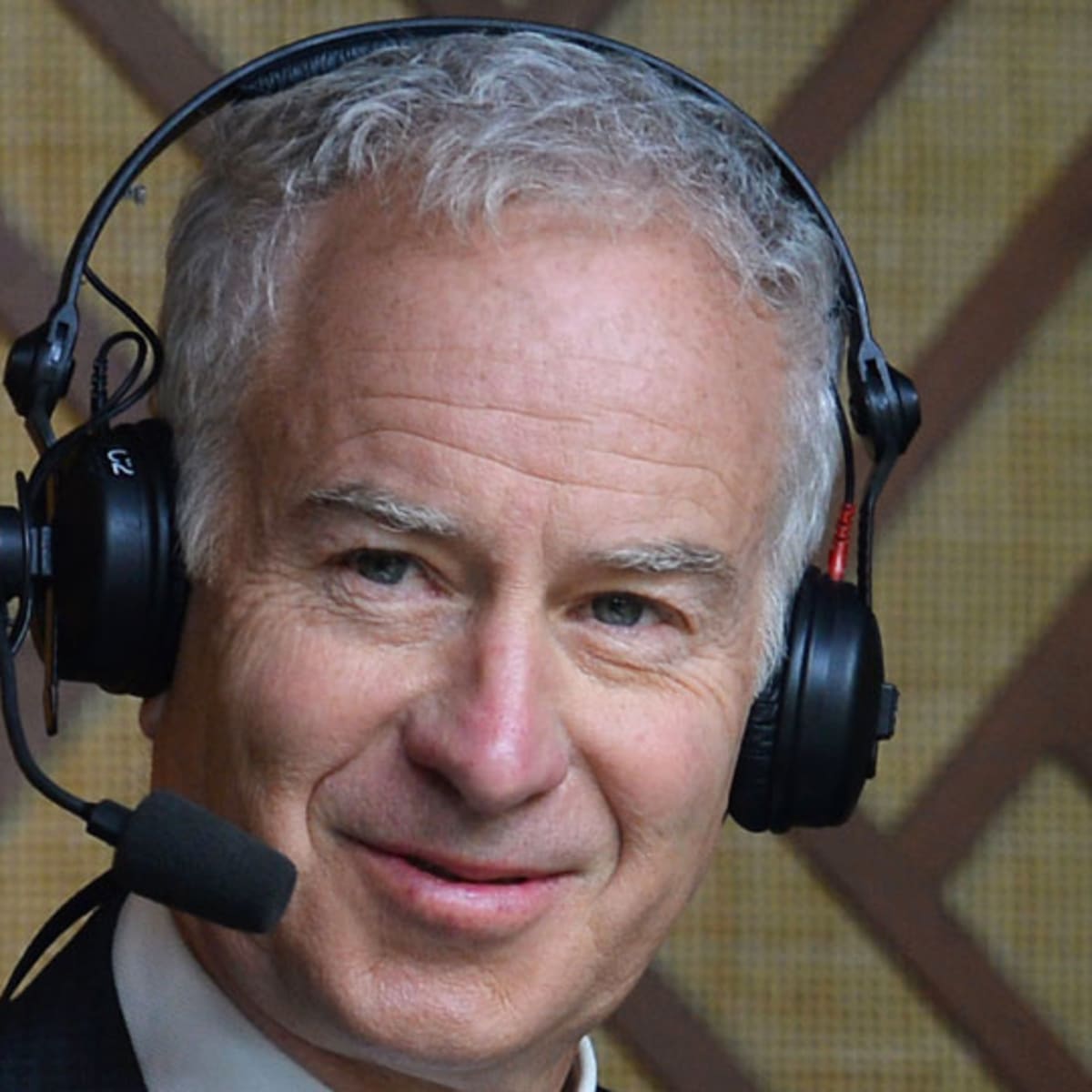“You cannot be serious!” Who could forget that line, which is so synonymous with John McEnroe berating an on-court official? So synonymous that it became the title of his autobiography. The famous line was part of a memorable moment at Wimbledon in 1981. It was in his opening round match, when he approached chair umpire Edward James yelling, “You cannot be serious, man. YOU CANNOT BE SERIOUS! That ball was on the line, chalk flew up. It was clearly in. How could you possibly call that out!” McEnroe walked away saying, “You guys are the absolute pits of the world.” The outburst cost him a point in that match. Some consider that the top Wimbledon moment of all-time. McEnroe doesn’t agree, admitting later that he felt “terrible” about the incident.

McEnroe never seemed to agree with umpires or linesmen, but it didn’t stop him from becoming one of the best tennis players of his era. The late 70’s and early 80’s belonged to the headband wearing boisterous left-hander. McEnroe was truly one of the most colorful players during his professional career and he’s parlayed that into a successful post-playing career as a television analyst.
TENNIS CREDENTIALS
McEnroe earned induction into the International Tennis Hall of Fame in 1999 based on his illustrious career on the court. He finished with 77 singles and 78 doubles titles. McEnroe won seven grand slam singles titles, four at the US Open and three at Wimbledon, and nine men’s Grand Slam doubles titles. His singles match record of 82–3 in 1984 remains the best single season win rate of the Open Era.
McEnroe became the top-ranked singles player in the world on March 3, 1980. He was the top-ranked player on 14 separate occasions between 1980 and 1985 and finished the year ranked No. 1 four straight years from 1981 through 1984. He spent a total of 170 weeks at the top of the rankings.
As an 18-year-old amateur in 1977, McEnroe won the mixed doubles at the French Open with Mary Carillo. He then made it through the qualifying rounds of Wimbledon, working his way into the field. McEnroe would lose to Jimmy Connors in four sets. At the time it was the best performance by a qualifier at a Grand Slam tournament.
He played collegiately at Stanford and in 1978, McEnroe won the NCAA Singles title and led the Cardinal to the NCAA team title. Later that year, he turned pro and made it to the semifinals of the US Open, losing to Jimmy Connors. McEnroe won 5 titles that year, including the Masters Grand Prix in which he beat legend Arthur Ashe in straight sets. The lefty would finish ’78 as the fourth ranked player in the world.
NOT THE MOST POPULAR PLAYER
McEnroe didn’t stand out for his popularity. He didn’t really seem to care either. He played with a fire that burned, a competitiveness that was palpable but he was always arguing. Constantly putting down game officials for what he considered bad calls.
“I know I can see the ball better than the officials,” he said early in his career. “I can ‘feel’ when a ball is out or not. What’s so frustrating is to know you’re right and not be able to do anything about it.”
When he was just 20, he was nicknamed “Superbrat” by the British tabloids in 1979. “He is the most vain, ill-tempered, petulant loudmouth that the game of tennis has ever know,” The Sun wrote.
BROADCASTING
McEnroe started his broadcasting career with NBC in 1992 as an analyst on the network’s French Open coverage. In June of ’92 he made his debut as a commentator on NBC’s Wimbledon telecasts. McEnroe has also spent time with CBS, USA, the BBC and now ESPN.
As we’ve seen it a million times, a person’s unpopularity making them popular in the booth, because you never know what might be said. Controversy sometimes makes for great television. Someone willing to “tell it like it is” usually is a fan favorite. Enter McEnroe.

While the reputation for being the “bad boy” on the court, his on-air persona is a little bit different. The man knows the game of tennis and he’s used the knowledge to gain a reputation for being good at what he does. The combination of insightfulness and some outspoken commentary is working for him. He’s often making his point with the natural wit and cynicism he’s been blessed with. I know this will come as a shock, but he’s often willing to say what is on his mind. The only difference between McEnroe the broadcaster and the “Johnny Mac” of tennis fame, he’s much calmer when delivering his commentary in the booth. That makes him a lot easier to listen to and view.
Many that were able to play the game, whatever sport it might be, at a high level, have a hard time accepting today’s athletes. Some don’t like the way the game is played now, because it isn’t what it used to be. McEnroe is the exception to that rule. He has been known to appreciate and accept the way the game has changed since his era. It’s a quality that isn’t lost on viewers. Who really wants to hear that former great tell you that these athletes of today are “this or that” and not as good as they were when he played? It’s kind of a tired way of commentating. It’s lazy and not entertaining. Good on McEnroe for being “bigger” than that.
According to an “Awful Announcing” article in 2012, McEnroe is one of the top analysts regardless of sport. It goes on to say, and I’m paraphrasing here, McEnroe gives the broadcast credibility and enhances the coverage of tennis greatly.
WORKING WITH HIS BROTHER
McEnroe’s brother Patrick was quite the tennis player himself, but was constantly overshadowed by big brother John. Patrick has carved out a nice niche for himself in tennis broadcasting and is so versatile, he’s done commentary, hosting and play-by-play. The latter allowed him to be paired with John on many occasions.
The New York Times did a piece on the younger McEnroe in 2017 at the US Open in Flushing, NY.
The brothers were ecstatic to work together again on a broadcast. Patrick told the paper that the producers were initially worried about their similar Queens cadence. With Patrick doing the play-by-play and John doing the color commentary, their words often do the job of letting the viewer know who is talking.
The story looked at the two on opening night of the Open, they called a hard-fought match between Alexander Zverev and Darian King that stretched well past midnight. As the 2 a.m. hour approached, something shocking occurred. John seemed to agree with an umpire. Patrick wanted to make sure he heard his brother correctly. “I figured no one was watching,” John shot back.
Pretty cool that they get to work together, listening back to a few of their matches, I’m struck by how at ease both the brothers are. They should be after growing up together, but sometimes that brotherly competitiveness can rear its head. Not in the case of the McEnroe brothers.

OTHER APPEARANCES
John is obviously best known for his play, but he’s recognized for other things as well. McEnroe has been an author and actor in various roles including appearances on 30 Rock, CSI NY, Curb Your Enthusiasm, Saturday Night Live, Anger Management, Jack & Jill, and Mr. Deeds to name a few. His memoir that I alluded to earlier, You Cannot Be Serious reached #1 on the New York Times nonfiction best-seller list in 2001, and was also ranked #1 on the London Times best-seller list.
CONCLUSION
McEnroe has done a nice job of using his past experiences as a dominant tennis player to move into an analyst role and explain the game to his audience. He offers personality and wit, things his fans are expecting of him, in a conversational and expert way. McEnroe could easily be that screaming and angry guy he was on the court, but he realizes that too much of that would turn an audience off. He is able to strike that delicate balance between the player he was and the broadcaster he is, which is not an easy thing to do.
Andy Masur is a columnist for BSM and works for WGN Radio as an anchor and play-by-play announcer. He also teaches broadcasting at the Illinois Media School. During his career he has called games for the Chicago Cubs, San Diego Padres and Chicago White Sox. He can be found on Twitter @Andy_Masur1 or you can reach him by email at Andy@Andy-Masur.com.





